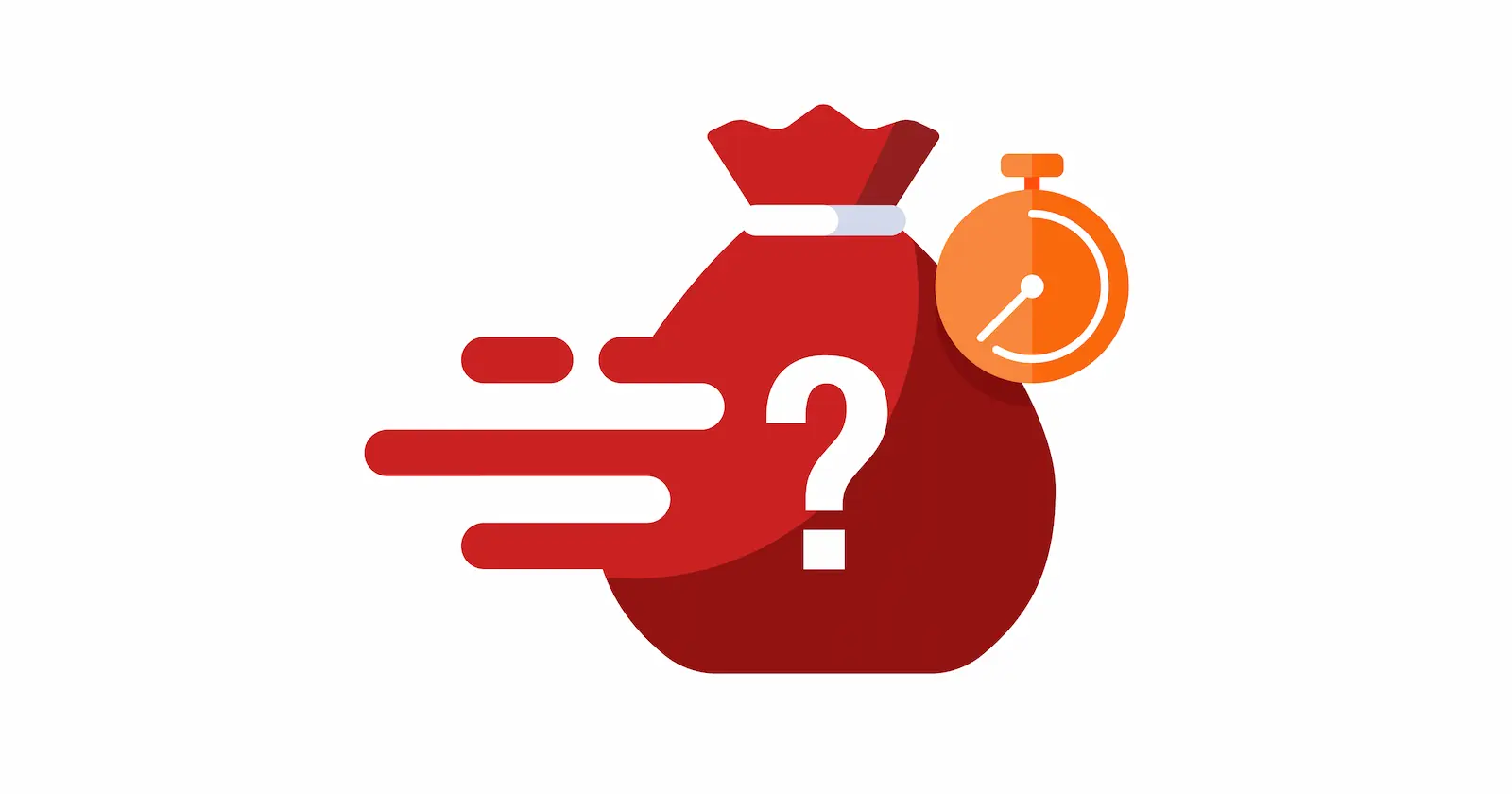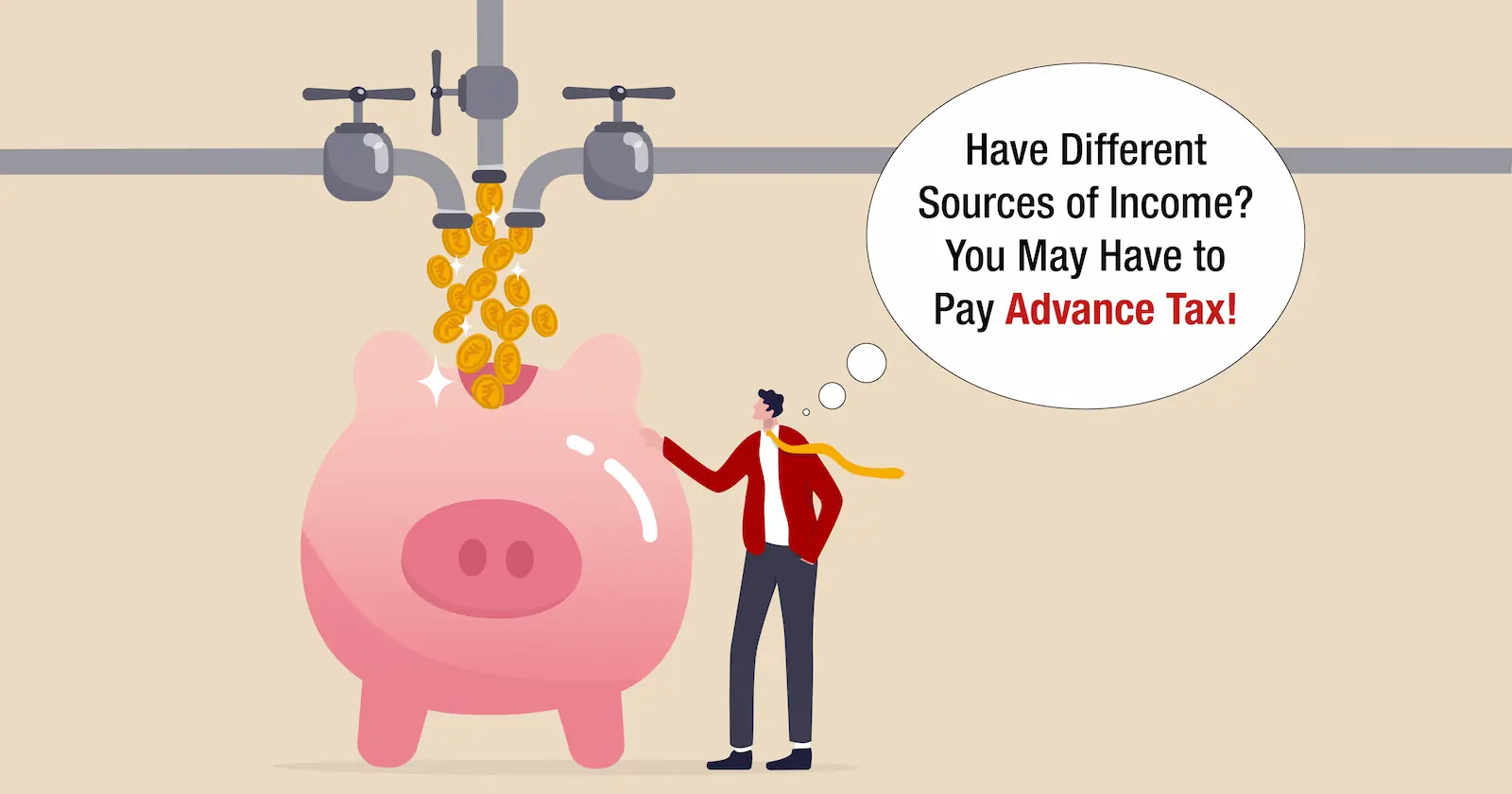Who is liable to pay Advance Tax?
In order to be liable (eligible) to pay advance taxes, the following criteria must be met:
As per section 208 of the Income Tax Act 1961, every person whose estimated tax liability for the year is more than or equal to `10,000 is liable to pay advance tax.
Those who are excluded from paying advance taxes are Senior citizens, whose age is 60 years or more but have no income through business or profession.
- Your tax payable should be at least ₹ 10,000 or above.
- You should either be self-employed or salaried.
- Income earned or received on through capital gains on shares
- Fixed deposit interest earned.
- A lottery winner's winnings.
- Income or rent earned from a house property
Advance Tax for Taxpayers (apart from the ones who are covered under section 44AD or 44 ADA):
| Due date of installment | Amount payable |
|---|---|
|
On or before 15th June |
Not less than 15% of advance tax liability |
|
On or before 15th September |
Not less than 45% of advance tax liability, as reduced by the amount, if any, paid in the earlier installment. |
|
On or before 15th December |
Not less than 75% of advance tax liability, as reduced by the amount or amounts, if any, paid in the earlier installment or installments. |
|
On or before 15th March |
The whole amount of advance tax liability as reduced by the amount or amounts, if any, paid in the earlier installment or installments |
How to calculate advance tax? Explained with an Example
You can estimate your advance income tax liabilities by following the 4 simple steps:
- Estimate your income to be earned during the financial year
This includes making an estimate of the possible annual income one might get. Interest income, rental income, capital gains, professional income, and any other types of income must all be combined.
- Calculate the cost associated with the expected income.
- The deductions you intend to make under Chapter VIA should be calculated.
- Calculate the overall tax payable.
Make sure to consider these points when calculating your tax payable:
- The tax slab rates applicable to you
- Tax rebate under Section 87A
- The TDS to be deducted by other taxpayers on your income
Example: Let us understand the entire process with the help of an example
Mr. Arun is a taxpayer who earned income under the head ‘Business and Profession’.
- Estimated Gross Receipts for the financial year– ₹ 22,00,000
- Estimated Expenses related to income earned- ₹ 10,00,000
- Payments from which TDS is to be deducted - ₹ 4,00,000
- Interest Income- ₹ 50,000
Let us calculate the liability now:
| Particulars | Amount (₹) |
|---|---|
|
Gross Receipts for the Financial Year |
22,00,000 |
|
Expenses Related to the Income Earned |
10,00,000 |
|
Income From Profession |
(22,00,000 – 10,00,000) = 12,00,000 |
|
Income From Other Sources - Interest on Fixed Deposit |
50,000 |
|
Total Income Chargeable to Tax |
12,50,000 |
|
Less: Deductions under Chapter VIA |
|
|
Investment in PPF Account |
– 50,000 |
|
Investment in ELSS Mutual Funds |
– 70,000 |
|
Investment in Tax-Saving Fixed Deposit |
– 30,000 |
|
Deduction under Section 80D |
– 30000 |
|
Total Taxable Income |
= 10,70,000 |
|
Tax Payable |
1,33,500 |
|
Less: TDS Deducted by other taxpayers |
(4,00,000 x 10%) = 40,000 |
|
Tax Payable in Advance |
93,500 |
If you miss the deadline of 15th June [section 234 (c) ]
Interest is charged for failure of paying advance tax under Section 234C. From the due date of each installment until the day of actual payment, interest is applied at a rate of 1%. Here's the list of all the applicable interest rates and how interest is calculated:
If a taxpayer has not chosen to use presumed income:
| Simple Interest |
|
Period of Interest | Amount on which interest is calculated |
|---|---|---|---|
|
If Advance Tax paid on or before June 15 is less than 15% of the Net Amount* |
1% per month |
3 months |
15% of Net Amount* (-) tax deposited before June 15 |
|
If Advance Tax paid on or before September 15 is less than 45% of Net the Amount* |
1% per month |
3 months |
45% of Net Amount* (-) tax deposited before September 15 |
|
If Advance Tax paid on or before December 15 is less than 75% of Net Amount* |
1% per month |
3 months |
75% of Net Amount* (-) tax deposited before December 15 |
|
If Advance Tax paid on or before March 15 is less than 100% of Net Amount* |
1% per month |
Till the date of actual payment. |
100% of Net Amount* (-) tax deposited before March 15 |
*Net Amount = Tax liability on total income chargeable to tax (-) tax paid
Tax Paid in terms of relief, TDS, TCS, or Tax Credit
Note – However, if the advance tax paid by the assessee on the current income, on or before 15th June or 15th September, is not less than 12% or 36% of the tax due on the returned income, respectively, then, the assessee shall not be liable to pay any interest on the amount of the shortfall on those dates.
If you miss the deadline of 15th March [section 234 (b)]
In case you fail to pay advance taxes by the end of a financial year, you can still discharge the tax liabilities after the end of the financial year. However, the tax paid after the due date is treated as a self-assessment tax and not as an advance tax. For not paying advance taxes on time by the end of the financial year, you will have to pay an interest of 1 percent per month from 1st April to the following year till you complete your liabilities of paying taxes. Such interest is calculated on the amount of difference between the assessed tax and the advance tax paid. However, in case the shortfall of payment of advance tax is less than 10 percent of your tax liabilities, then you will not have to pay any interest.
Exemption in Advance Tax Payments
- Senior citizens (who are aged 60 years and above) and those who rank as senior citizens and who also don’t own business establishments of any kind are those who are always exempted from making advance tax payments.
- The advance tax is not due from salaried people who fall inside the TDS net. However, advance tax will be charged on any earnings generated from sources including capital gains, interest income, rental income, and other non-salary sources of income.
- If TDS deducted is more than the tax payable for the year, then one does not have to pay the advance tax.
- Advance tax may also not be paid by taxpayers who choose presumptive schemes in which business income is always assumed to be around 8% of the turnover.
- Business owners with a turnover of less than INR 2 crore may use presumptive schemes. Sections 44AE and 44AD deal with the presumptive scheme of paying income tax. Such schemes can be easily opted by business people whose annual business turnover is less than 2 cores. While the presumptive scheme for advance tax payments are usually reserved for business people alone, such a scheme has very recently been extended to architects, lawyers, and doctors in the financial year 2016 to 2017, provided their yearly receipt totals to a maximum of Rs.50 lakhs.





Comments